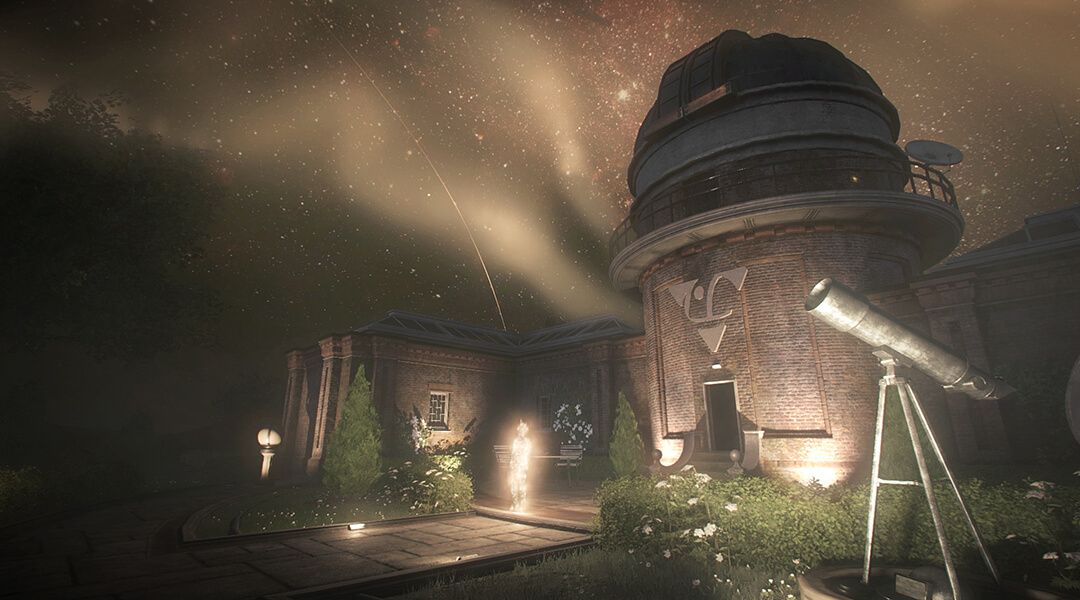Everybody's Gone to the Rapture drops players into a beautiful, vacant world with no instructions and asks them to solve an enormous mystery by walking, listening, and watching. Even without any engaging mechanics, the game's world is incredibly engrossing.
It's not uncommon for a great narrative game to make players sad. The Last of Us brought everyone to tears within the first twenty minutes and that's just one example of heartache in gaming. Everybody's Gone to the Rapture continues this tradition of forcing gamers to confront death and loss, but in a much less action-packed way than has never been done before.
Everybody's Gone to the Rapture is a difficult game to describe, due to its dedication to simplicity. The core mechanic at play is exploration. Players find themselves in control of an unnamed, unseen (first-person) protagonist and begin slowly walking around a quiet English village with no instruction or directions. It becomes clear very quickly that something bad has happened and that every individual is missing from the town for some reason. Players roam the town looking for audio and visual clues to piece together exactly what happened to the former residents of Shropshire.
Explaining the mechanics of Everybody's Gone to the Rapture is both easy and difficult. For the most part, the game is a walking sim. Everybody's Gone wants players to really live in the environment for the four or five hours it takes to unravel the mysteries of Shropshire. There are clues scattered around the town and players interact with them by looking and listening, but there is no x-ray vision detective like in Batman here. Instead, players just find a blood stain and stare at it, thinking about how it might have gotten there or who it could have belonged to.
The most detailed and important clues come in the form of glowing orbs of light floating around the town. Players approach these orbs and they manifest into memories. The player watches an interaction, usually between two town members, and listens to their conversation. These memories arrive in whatever order you stumble across them, so players who rush through the first part of the town without exploring much may hear a piece of the story completely out of order. Surprisingly, this doesn't really hurt the game's narrative, which already requires a lot of filling in the blanks anyway.
The exploration feels a little cumbersome and maybe even boring at first (especially until you find the sprint button), but the world has a way of sucking players in. The game drops players in with no instructions at all. The lack of mechanics make this less intimidating, but it's still a big town to explore with no quest points, directions, or idea what is happening. Players can open doors with X and turn on the occasional radio, but that's about as complicated as it gets (aside from the Tilting mechanic, which we'll address shortly). The game makes exploring the big town on foot pretty intuitive by leading players in different directions with rising music, the sound of wind, or the distant crackle of radio static. The glowing orbs also swoop in from time to time and race off in the direction of a new clue. This is a game for the patient players out there and taking the time to soak in every nook and cranny really pays out.
The one real gaming mechanic in Everybody's Gone to the Rapture comes in the form of tuning (or Tilting) in to the signal of hard-to-reach memories. When players reach an orb that requires this tuning, the game signals them to start rotating the controller to the left or right. Once the light is perfectly tuned using the gyroscope, an important moment will unlock and players will learn something crucial to the current story. There is no rewind feature, though, so be sure to pay attention.
This mini-game feels like tuning an old radio and will be easy once you realize what it is you are supposed to be doing. The game offers little instructions, though, so the first few tunings are going to be a bit awkward. The mechanic isn't really intrusive, but does feel a bit like an afterthought to a game that doesn't feel nearly as gamey (for lack of a better word) in any other aspect.
Describing the rest of Everybody's Gone in any details would lead to some game-ruining spoilers. The main draw of the game is its mystery and its amazing mood and tone. Peeking into memories while the beautifully sad score plays in the background will really make sentimental gamers reflect on the importance and fragility of life. Everyone in the town seems to have disappeared with some important unfinished business or last regret and it's hard not to feel somehow responsible as the player.
For as much as the game's setting is beautiful, living alone in its empty world feels very bleak. If the story went on any longer than a handful of hours, it might be too depressing to handle for some gamers, but the short campaign seems the perfect amount of time to visit this world. The game also splits the story up into a a handful of different stories with different characters (that feel a bit like unique acts) to help serialize the narrative. There are no progress bars, maps, or compass; so settle in for a real mystery when you boot this one up.
Everybody's Gone to the Rapture is now available for PS4. Game ZXC was provided a PS4 code for this review.




